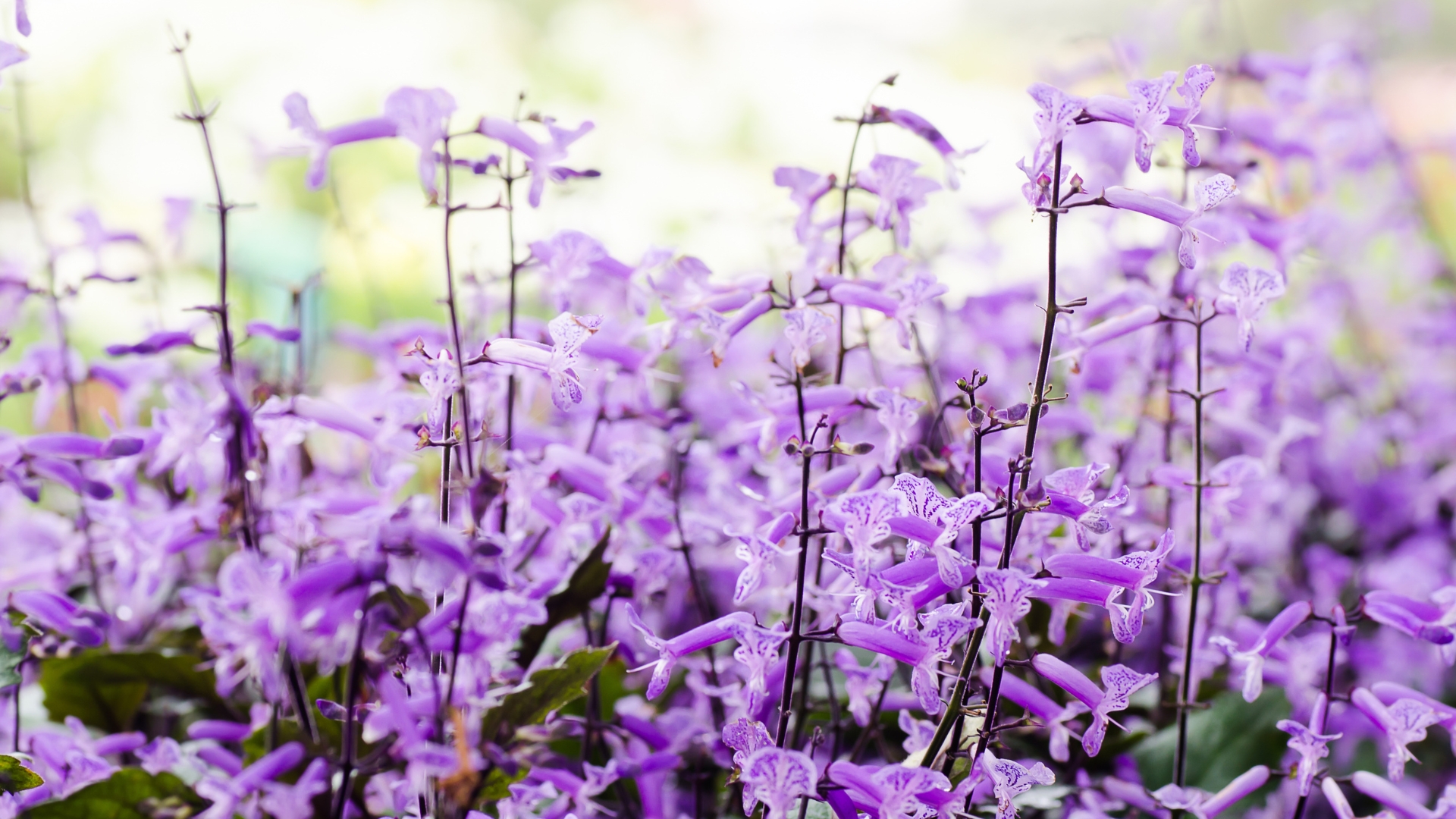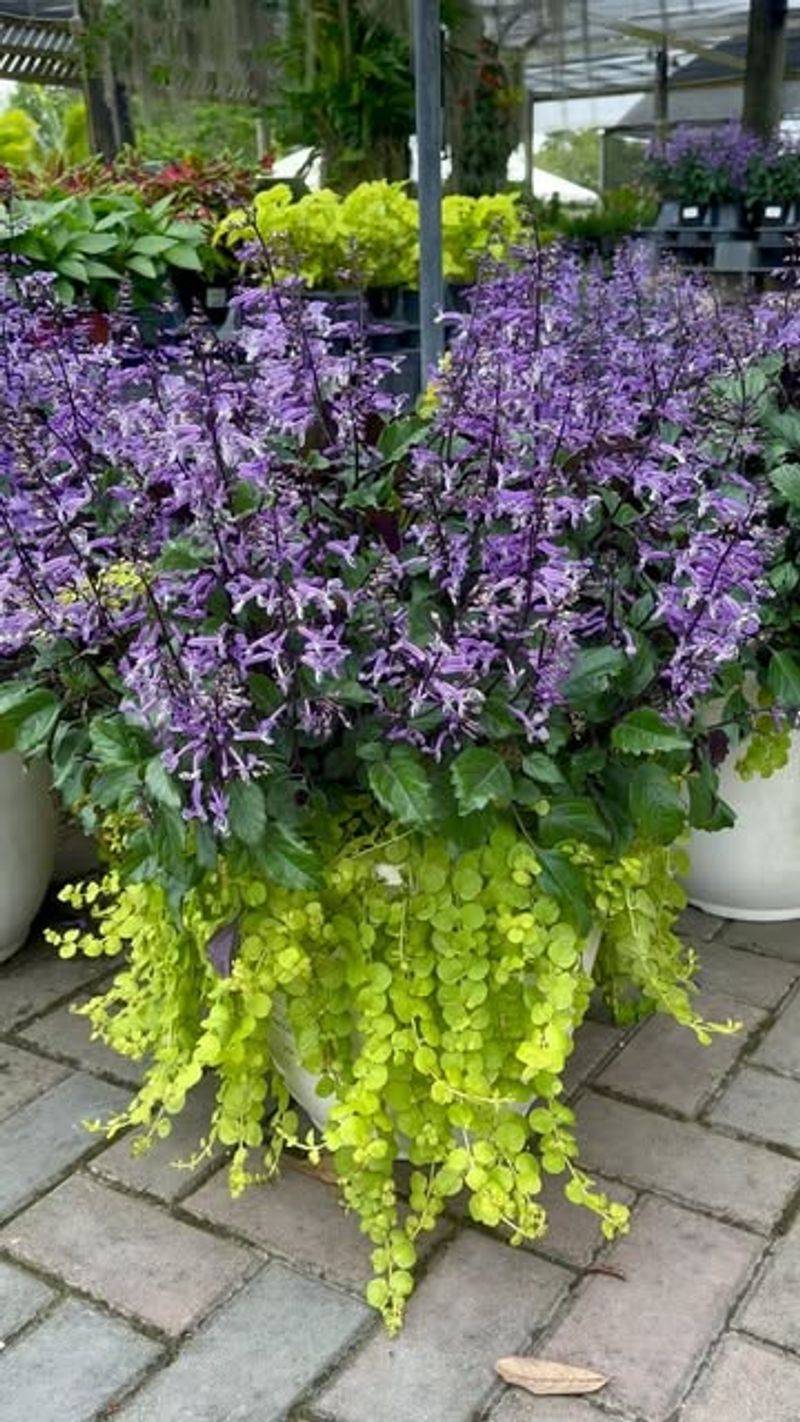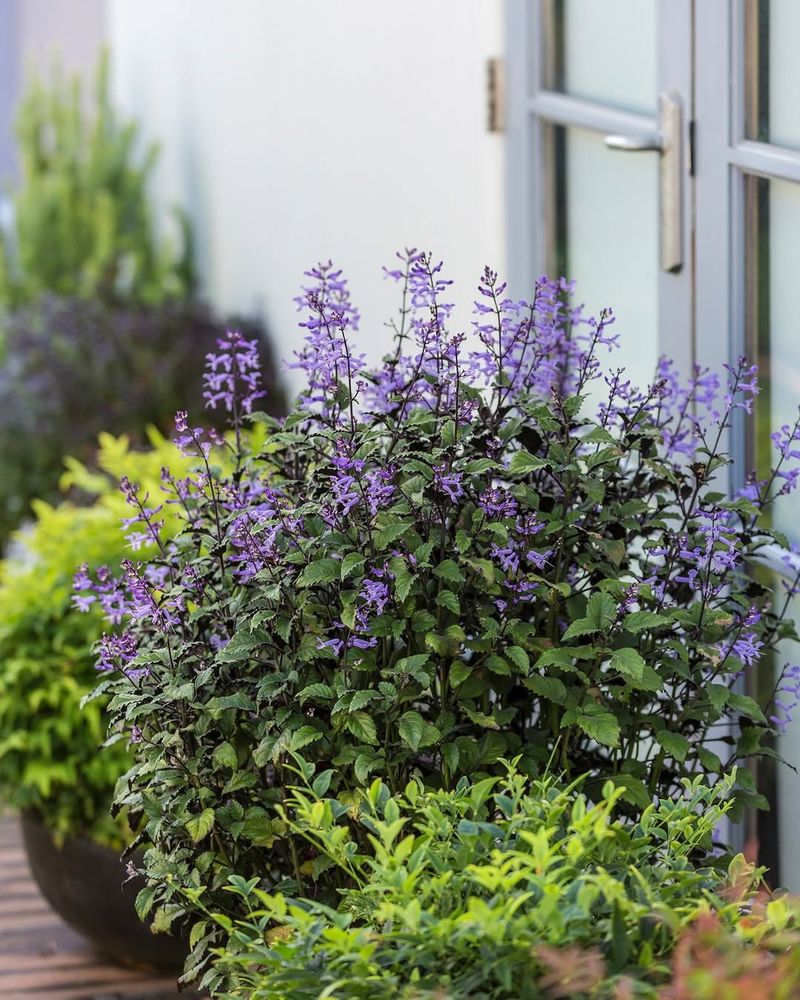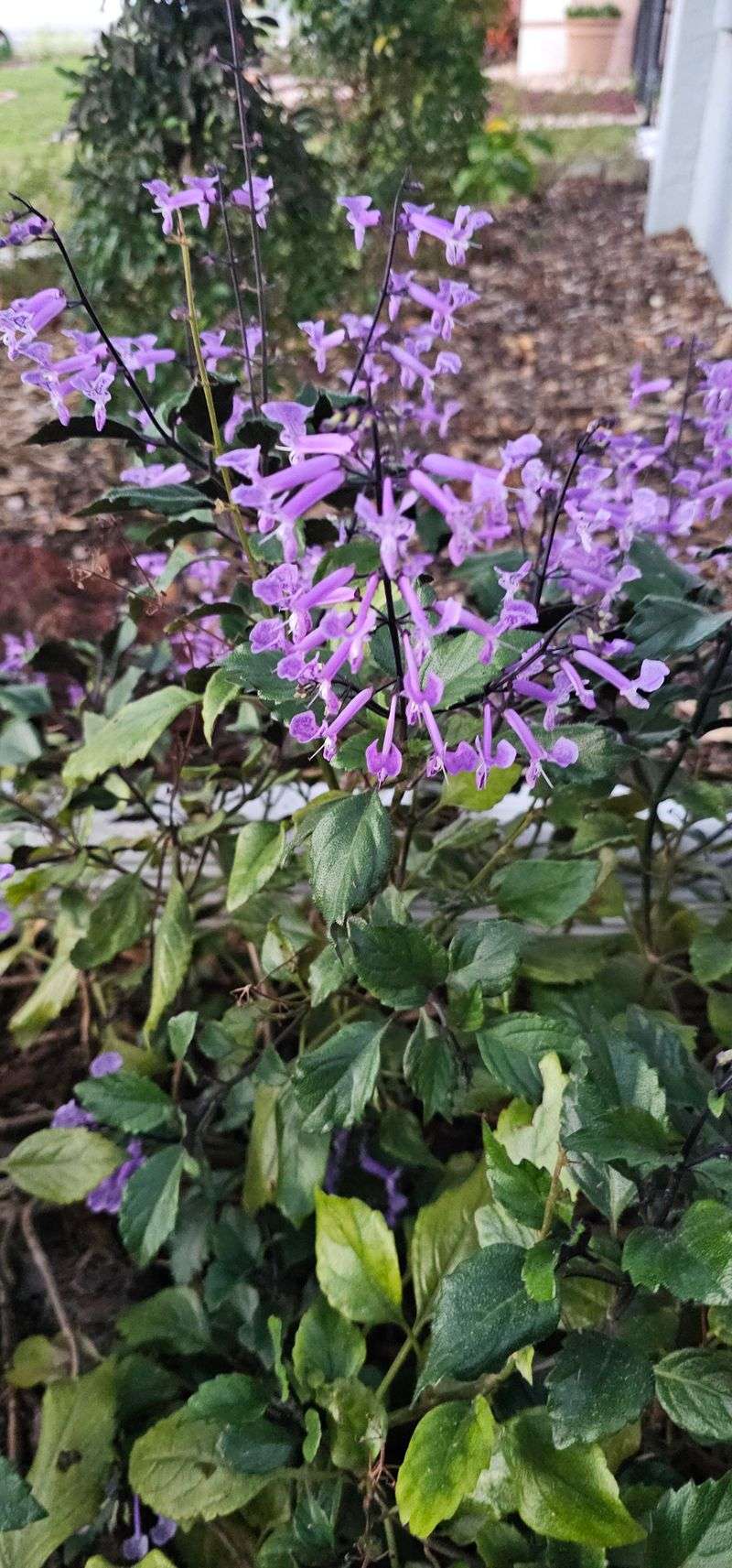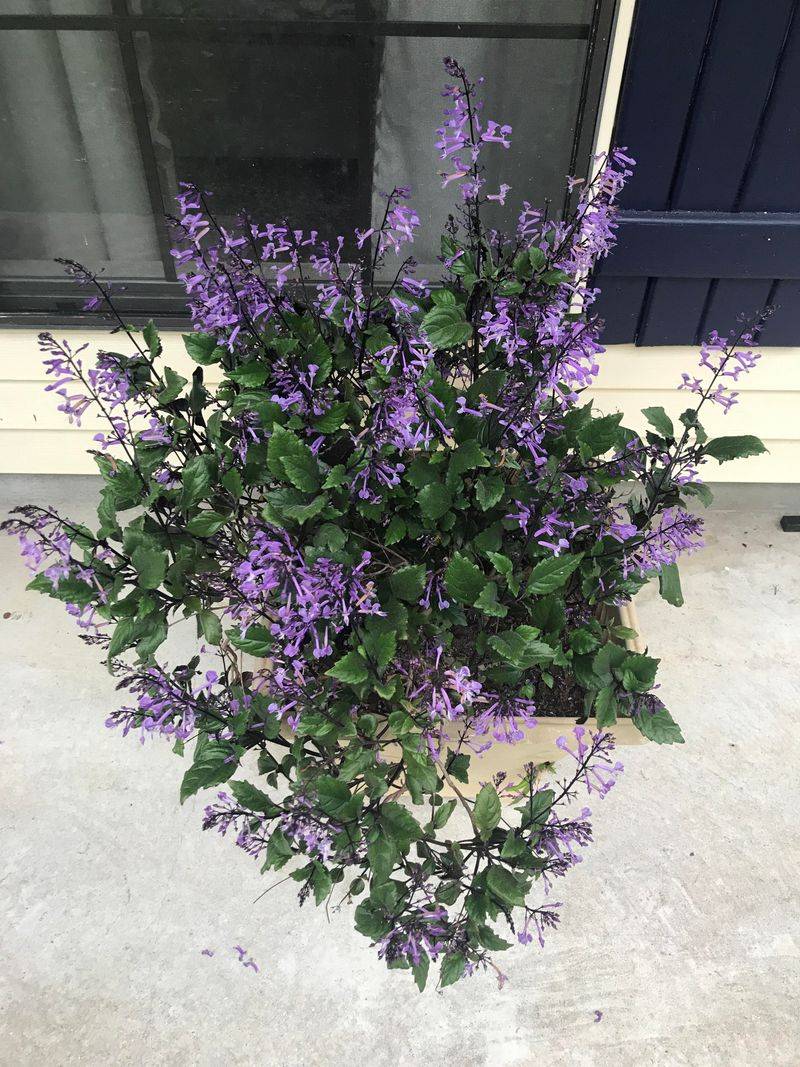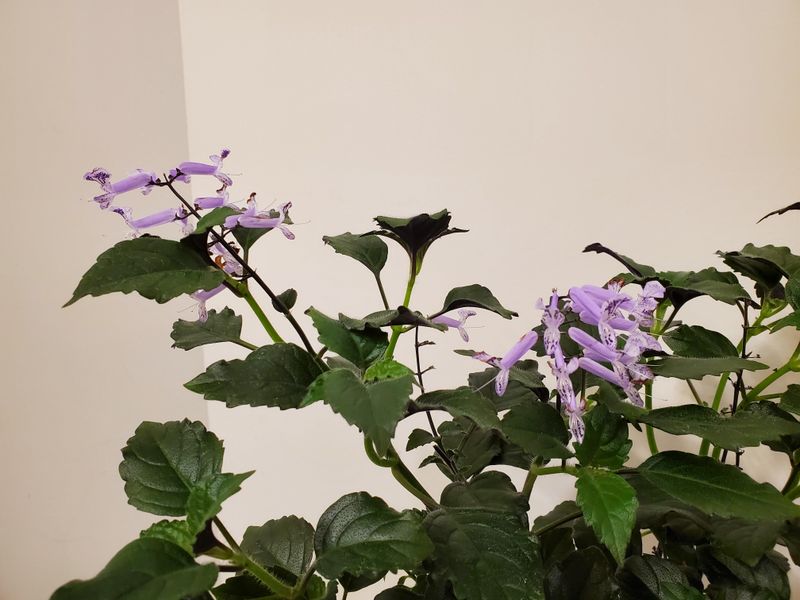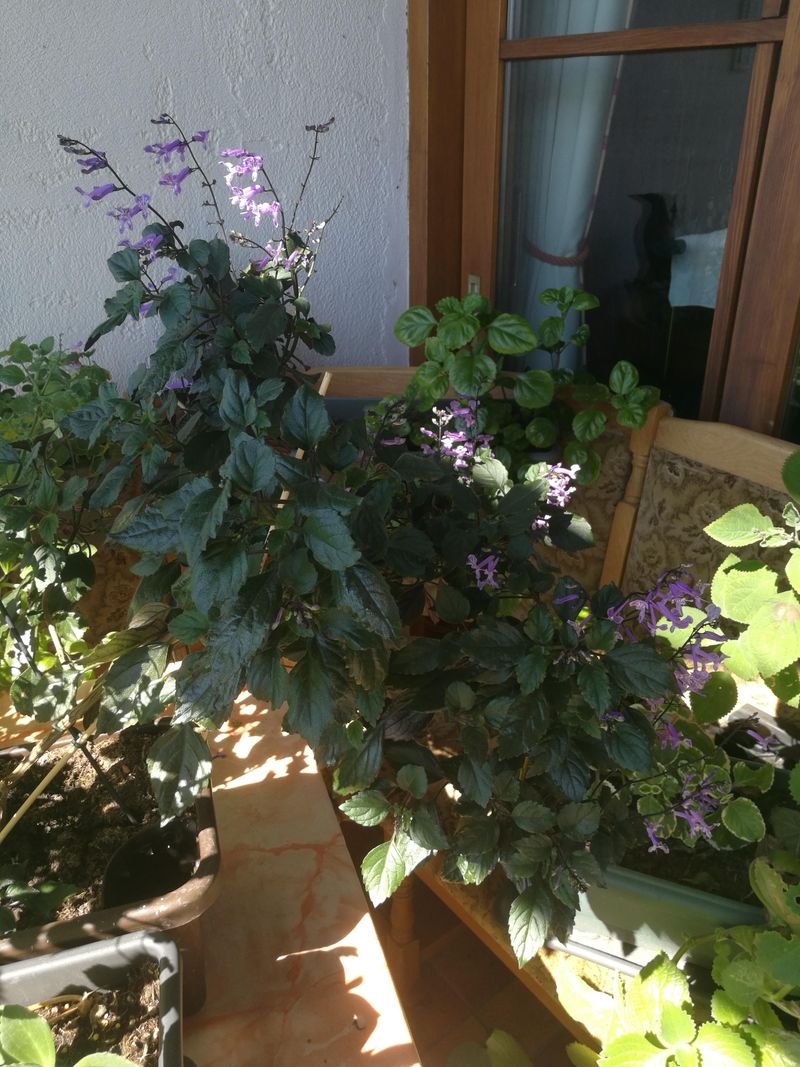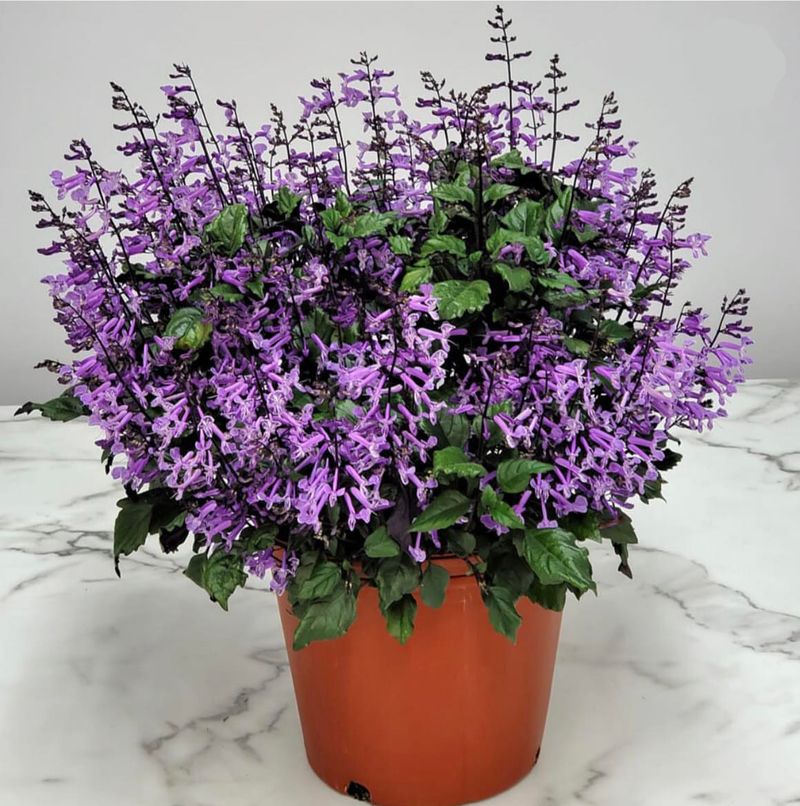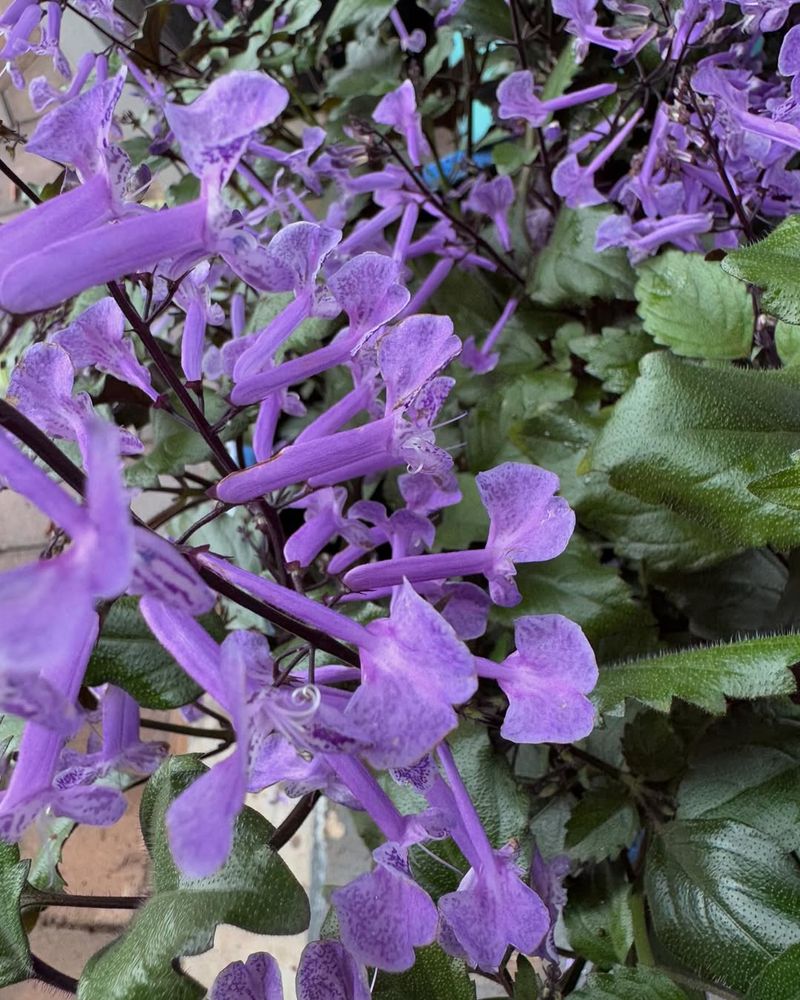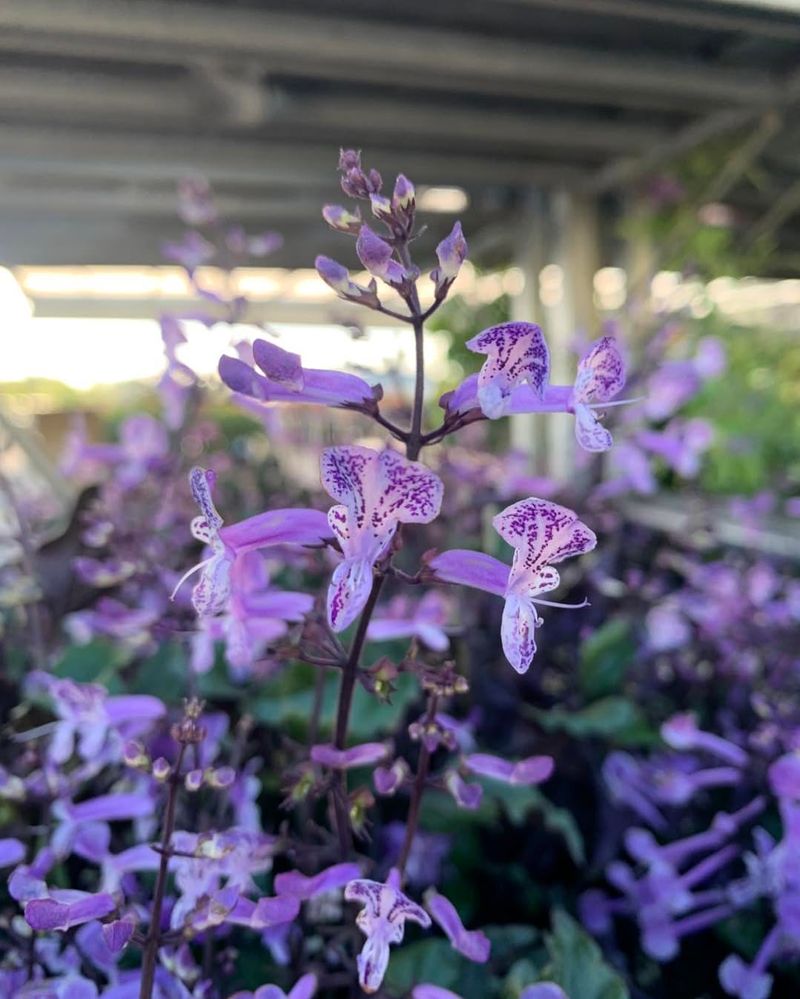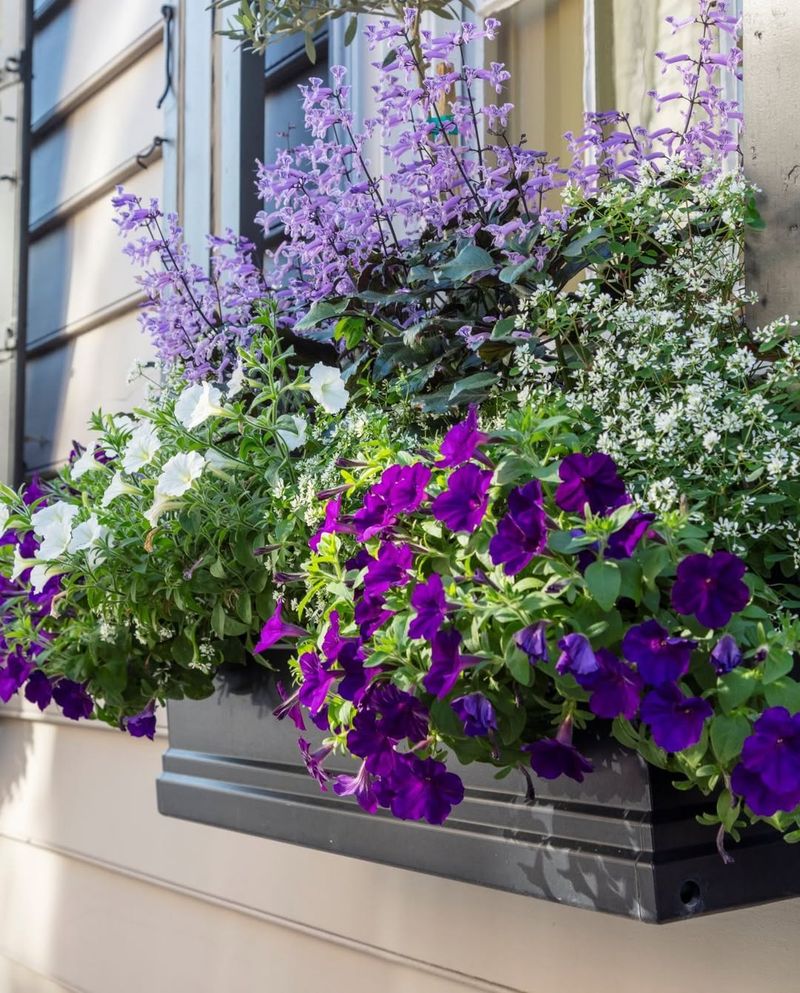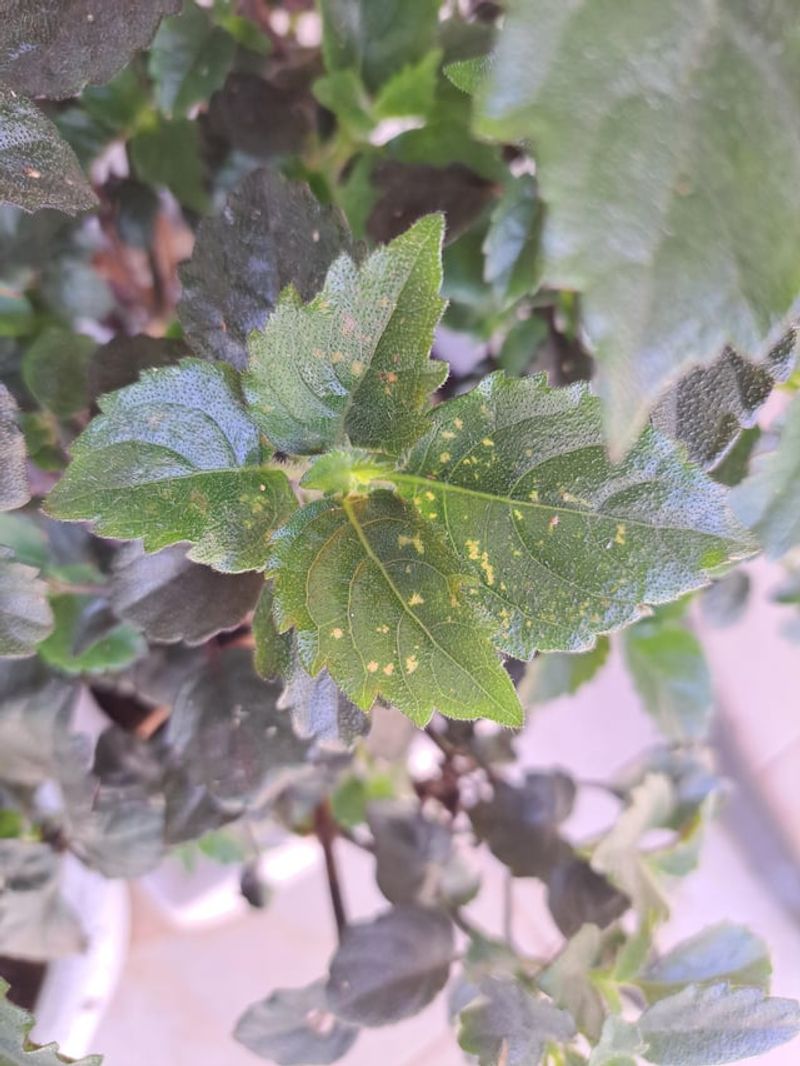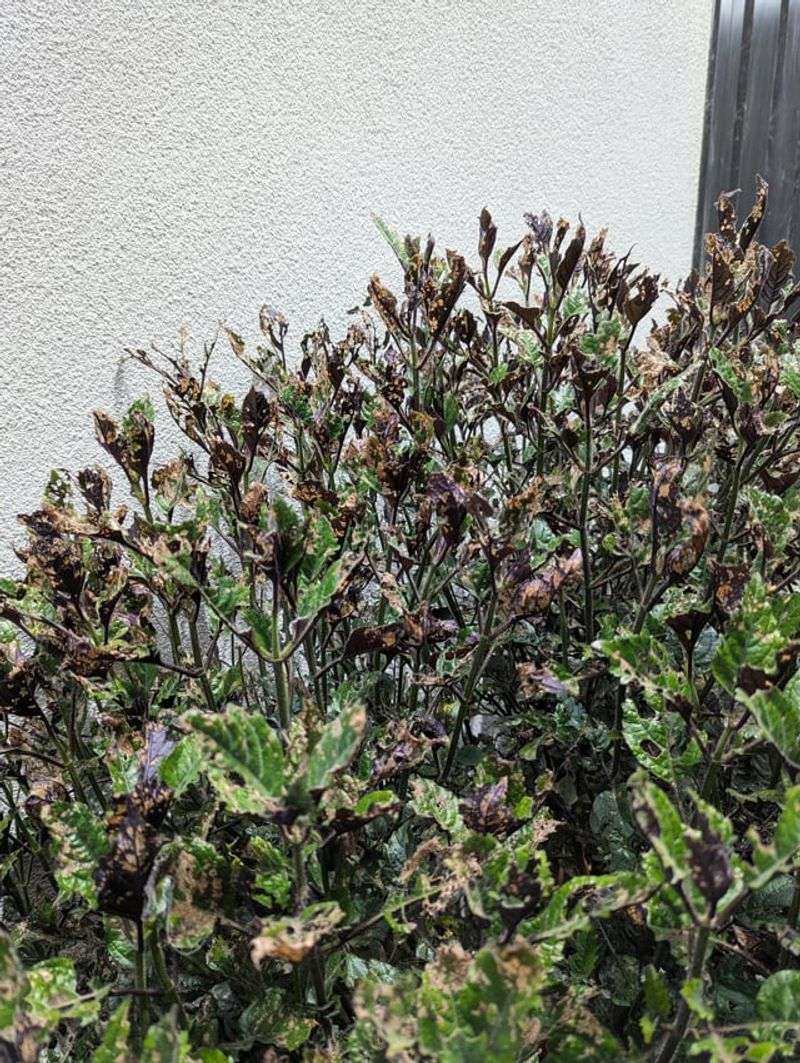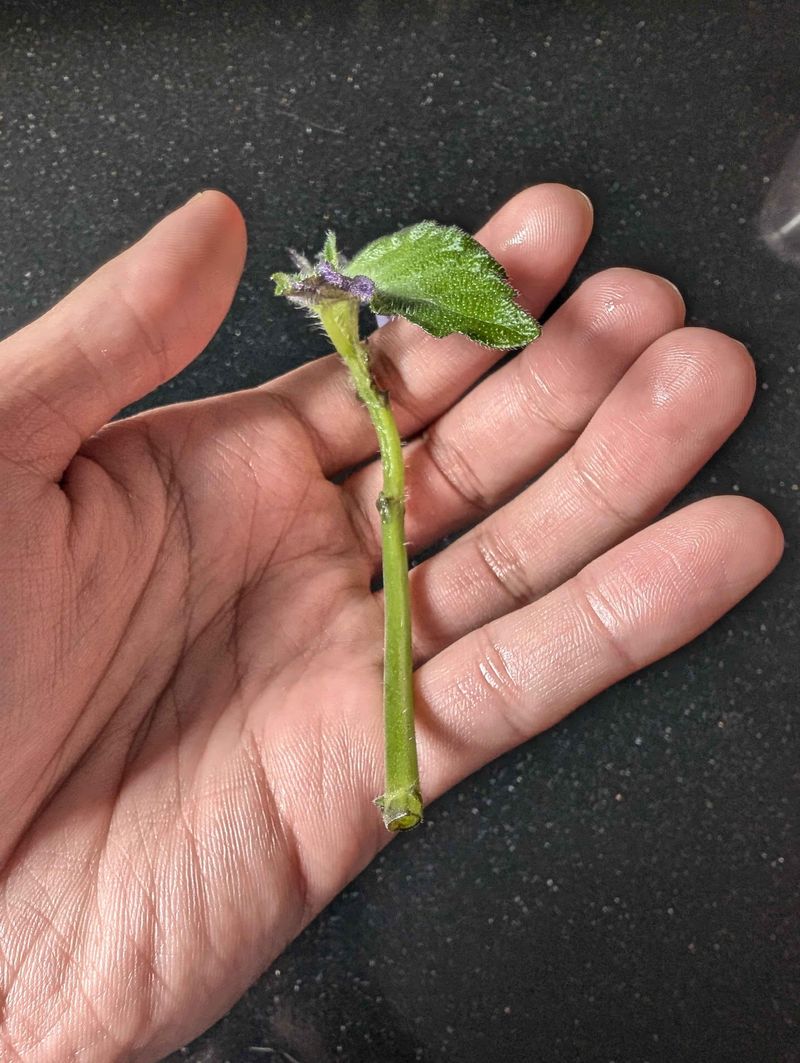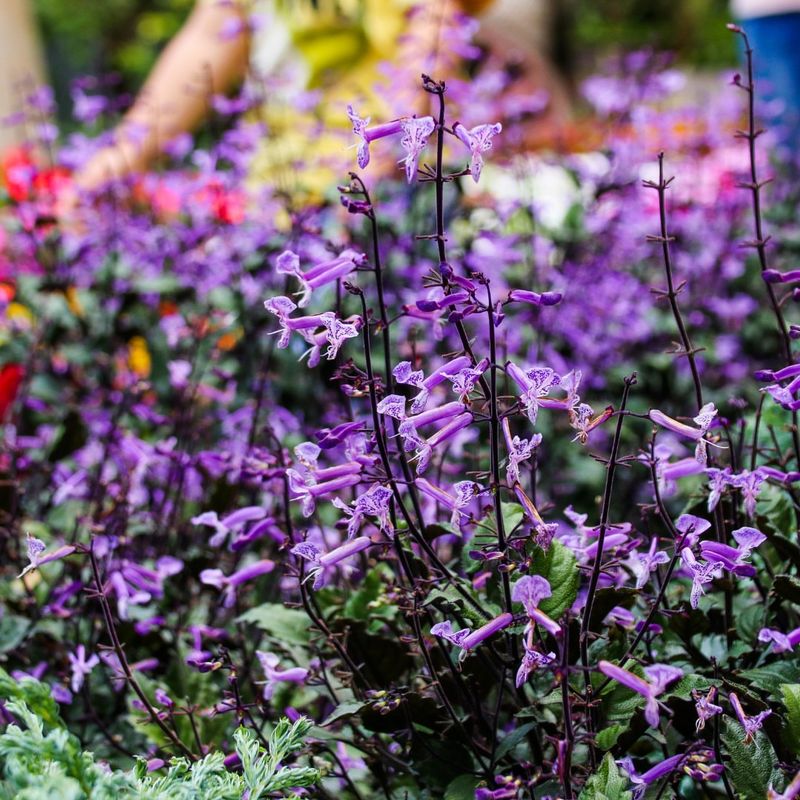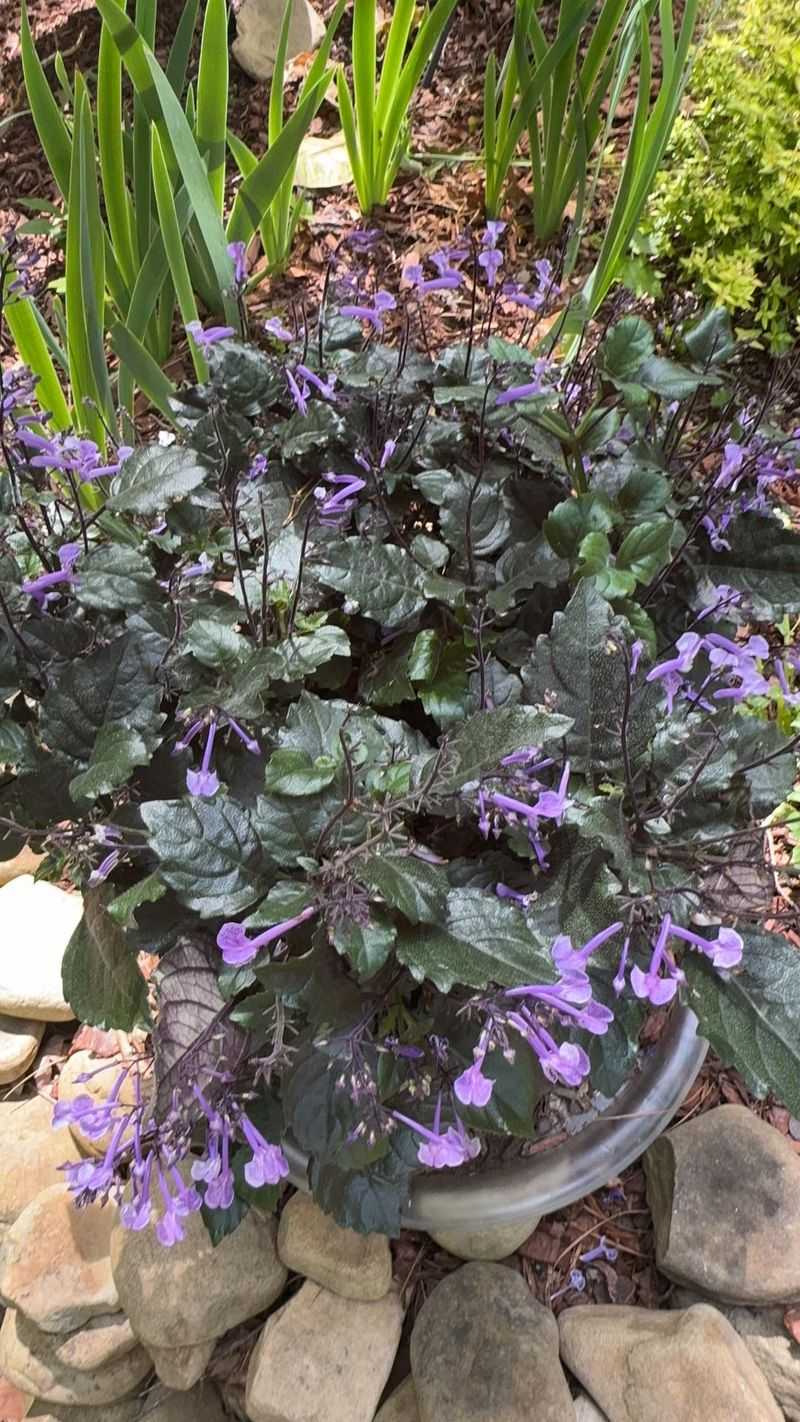‘Mona Lavender’ is one of those plants that just knows how to show off—and with a little care, it keeps the color going well into fall. I fell for its purple glow the first time I saw it, and now it’s a garden favorite
I can’t be without. These 15 tips will help you grow it full, healthy, and bursting with blooms. It’s not fussy, but it does have a few secrets to staying stunning.
Let’s keep those flowers coming long after summer says goodbye.
1. Perfect Your Planting Location
Find that sweet spot of dappled sunlight for your Mona Lavender to truly shine. Morning sun with afternoon shade works wonders, protecting those gorgeous purple leaves from scorching while providing enough light for blooming.
Indoor growers should place pots near east or north-facing windows. This lighting balance triggers the plant’s flowering response while preventing leaf burn, setting the stage for those stunning lavender blooms to keep coming.
2. Soil Secrets For Success
Rich, well-draining soil makes all the difference for these purple beauties. Mix regular potting soil with some perlite and compost to create the perfect growing medium that holds moisture without becoming waterlogged.
The ideal pH range falls between 5.5 and 6.5, slightly acidic but not extreme. Testing your soil before planting helps ensure your Mona Lavender gets the nutrient availability it needs for those vibrant colors to really pop through fall.
3. Watering Wisdom
Keep the soil consistently moist but never soggy during the growing season. Stick your finger about an inch into the soil – if it feels dry at that depth, it’s time to water thoroughly until it runs from drainage holes.
Reduce watering slightly in fall without letting the plant completely dry out. Mona Lavender hates both extremes – overwatering leads to root rot while underwatering causes leaf drop and fewer blooms, so finding that middle ground is key.
4. Temperature Control Tricks
These beauties thrive in temperatures between 60-80°F (15-27°C), making them perfect for many indoor and outdoor spaces. When fall temperatures start dropping below 55°F (13°C), it’s time to bring outdoor plants inside.
Avoid placing them near drafty windows or heating vents which cause stress. Temperature stability is your secret weapon for continuous blooming – sudden shifts can shock the plant into dropping flowers and buds before they even open.
5. Fertilizing For Flowers
Feed your Mona Lavender every two weeks during spring and summer with a balanced, water-soluble fertilizer (like a 10-10-10). The steady nutrient supply keeps those lavender blooms coming in waves rather than all at once.
Switch to a bloom-boosting formula (higher phosphorus, like 7-9-5) in late summer to extend flowering into fall. Always apply to moist soil to prevent root burn, and dilute to half the recommended strength for container plants to avoid salt buildup.
6. Pruning For Persistence
Regular pinching and pruning creates bushier plants with more flowering stems. Pinch the growing tips when plants are young, and don’t be shy about removing spent flower spikes all the way to the first set of leaves.
For a fall revival, do a moderate pruning in late summer, cutting back by about one-third. This rejuvenation triggers new growth and a fresh flush of those gorgeous purple blooms just when other garden plants are fading away.
7. Container Considerations
Pots provide excellent control over growing conditions for Mona Lavender. Choose containers at least 12 inches in diameter with plenty of drainage holes to prevent waterlogged roots that lead to rot and disease.
Terra cotta pots work wonderfully as they allow excess moisture to evaporate through their porous sides. When repotting, size up gradually rather than jumping to much larger containers, which can hold too much moisture and lead to root problems.
8. Humidity Hacks
Maintaining moderate humidity around 40-50% keeps those gorgeous leaves looking their best. For indoor plants, place the pot on a tray filled with pebbles and water, making sure the pot sits above the water line to prevent root rot.
Mist the leaves occasionally during dry winter months when indoor heating systems can dry out the air. Grouping plants together also creates a beneficial microclimate with higher humidity levels that Mona Lavender absolutely loves.
9. Light Adjustment Techniques
As days shorten in fall, your Mona Lavender needs help to keep blooming. Moving plants to brighter spots (still avoiding harsh direct sun) compensates for decreased daylight hours and keeps the flowering cycle going.
For indoor plants, consider supplemental grow lights on a timer for 12-14 hours daily. The purple-backed leaves will show their best color with proper light levels – too little light means fewer flowers and leggy growth, while too much causes leaf scorch.
10. Companion Planting Strategies
Pair your Mona Lavender with complementary plants that share similar needs. Silver-leaved plants like dusty miller create stunning contrast against the deep purple leaves and lavender flowers, making both plants pop visually.
Consider companions like coleus, begonias, or impatiens that also thrive in partial shade and consistent moisture. Avoid placing them with plants that need dry conditions or full sun, as competing needs will make it impossible to keep everyone happy.
11. Pest Prevention Practices
Inspect your plants weekly for early signs of trouble. The main pests to watch for are aphids, whiteflies, and spider mites, which can quickly multiply and sap the plant’s energy needed for flowering.
Treat minor infestations with insecticidal soap spray, focusing on leaf undersides where pests hide. Maintaining good air circulation between plants prevents many pest issues before they start, keeping your Mona Lavender healthy and blooming right through fall.
12. Disease Defense Tactics
Prevent fungal issues by watering at the base rather than overhead. Wet foliage creates perfect conditions for powdery mildew and leaf spot diseases that can quickly diminish your plant’s beauty and blooming ability.
Remove and dispose of any affected leaves immediately to prevent spread. Good spacing between plants allows air to circulate freely, which is your first line of defense against the humidity-loving pathogens that can cut your fall flower show short.
13. Propagation For Perpetual Blooms
Create new plants from stem cuttings in early summer for a second wave of fall bloomers. Take 4-inch cuttings just below a leaf node, remove lower leaves, and place in moist potting mix or water until roots develop.
Young plants often bloom more vigorously than older specimens. By starting new plants each year, you’ll always have fresh, vigorous Mona Lavenders ready to put on a spectacular fall show while older plants might be slowing down.
14. Seasonal Care Calendar
Spring means it’s time for repotting, fertilizing, and pinching back leggy growth. Summer calls for consistent watering, deadheading spent blooms, and watching for pests that thrive in warm weather.
Fall requires adjusting water and fertilizer slightly downward while maximizing light exposure. Winter means providing bright indirect light, reducing water, and holding off on fertilizer until new growth appears in spring – following this rhythm keeps your Mona Lavender perpetually beautiful.
15. Overwintering Excellence
Bring outdoor plants inside before temperatures drop below 50°F (10°C). Before the move, check thoroughly for hitchhiking pests and treat as needed to avoid infesting your other houseplants.
Reduce watering by about half during winter dormancy, allowing the top inch of soil to dry between waterings. Place in a bright location away from cold drafts and heating vents. This careful winter treatment ensures your plant conserves energy for a spectacular bloom show when growing season returns.

